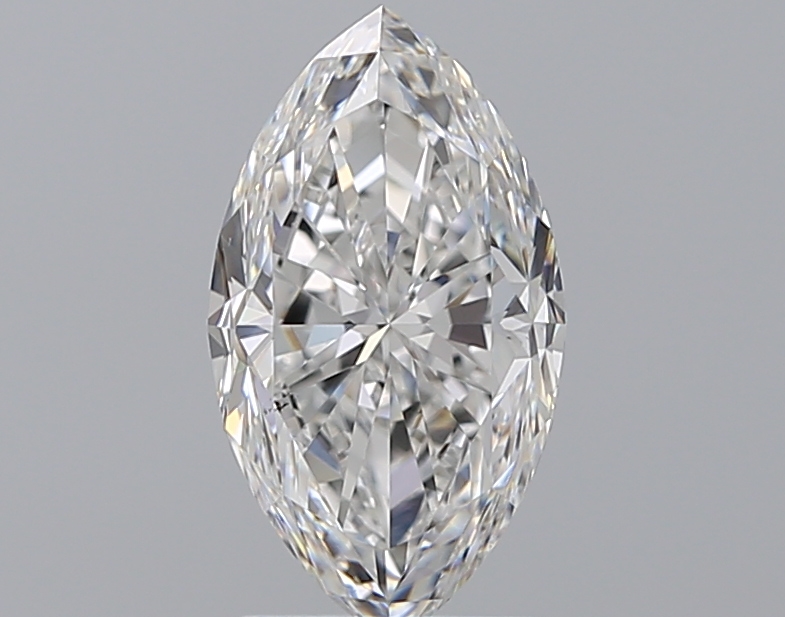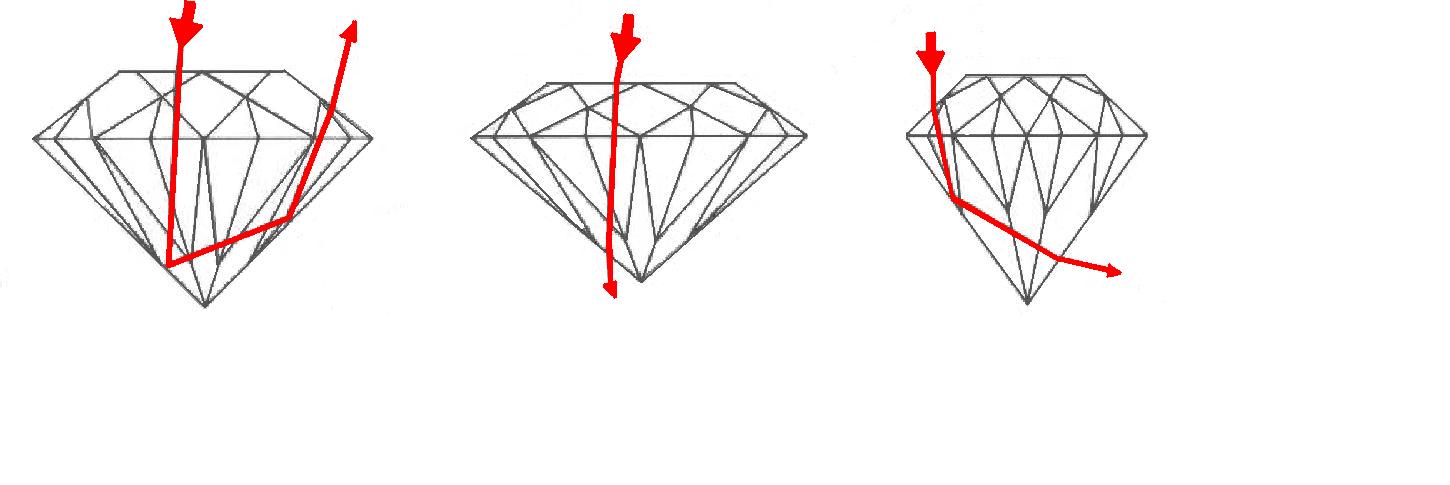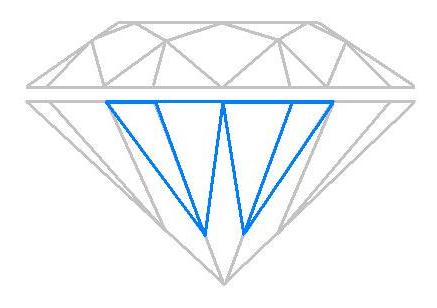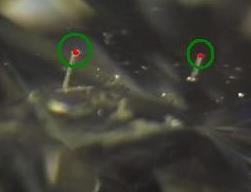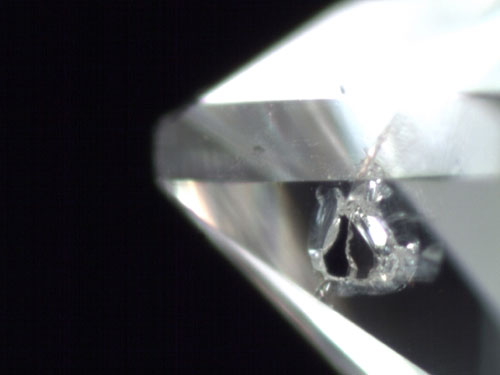The marquise cut is a diamond shape that is elongated and features two pointed ends, creating an elegant, oval-like shape. This cut is named after the Marquise de Pompadour, the mistress of King Louis XV of France, who is said to have commissioned a diamond in this shape to resemble the smile of the Marquise. The shape is often associated with royalty and sophistication, as it combines beauty with a sense of regal charm.
Also known as a navette (which is the French term for “little boat”), the marquise cut’s design is reminiscent of a boat’s hull, with its long, sweeping lines and pointed ends. This cut is distinctive and versatile, often used in rings, earrings, and necklaces to create a striking and elongated visual effect.
Characteristics of a Marquise Cut
Shape and Proportions:
The marquise cut is an elongated oval with pointed tips at both ends, giving it a symmetrical and graceful appearance. The length-to-width ratio can vary, but it is typically quite long and narrow, which enhances the illusion of a larger size.
The length of the diamond can range from about 1.5 to 2.5 times its width, and the exact ratio depends on the preference of the buyer or the designer. A diamond with a more elongated shape will often appear larger than a round diamond of the same carat weight.
Brilliance and Sparkle:
The marquise cut is designed to maximise the diamond’s brilliance, meaning it reflects a high degree of light, resulting in an eye-catching, sparkly appearance. This is due to the number of facets that are carefully aligned to reflect light in the optimal manner.
The elongated shape enhances the visual size of the diamond, making it look larger than a round brilliant cut of the same weight. It also offers the added benefit of a larger surface area to show off the diamond’s brilliance.
Facets and Cut:
The marquise cut is usually faceted similarly to a round brilliant diamond, with 58 facets that maximise light reflection. The crown of the diamond, or the top part, has a series of triangular and kite-shaped facets, which work together to create the sparkle.
Due to the pointed ends, it is important for the cutter to ensure that these areas are not too sharp, as they can make the diamond more susceptible to damage. The cutting process focuses on maintaining the integrity of the shape and ensuring that the facets are aligned to produce the maximum brilliance and fire.
Unique Design and Versatility:
The marquise cut’s distinctive elongated form makes it a popular choice for engagement rings, especially when the goal is to make the diamond appear larger. Its shape is particularly flattering for smaller fingers, as it creates the illusion of length and elegance.
The marquise cut is also versatile in its use in jewellery design, as it pairs well with both traditional and modern settings. It can be used in rings, pendants, earrings, and bracelets, and it is often surrounded by other diamonds or gemstones to enhance its overall appearance.
Visual Appeal:
The elongated silhouette of a marquise cut diamond offers a slimming effect on the finger or the wearer’s appearance, making it a popular choice for those who want to emphasise elegance and sophistication. The cut also provides optical illusions, making the stone appear larger and more slender.
The pointed ends, in particular, create a dramatic and bold look, making marquise diamonds stand out in jewellery pieces. This cut is often chosen by those who want a distinctive, eye-catching piece that is unique and memorable.
Considerations When Choosing a Marquise Cut
Proportions and Symmetry:
When selecting a marquise cut diamond, the proportions and symmetry of the shape are essential. An asymmetrical or improperly proportioned marquise cut can result in a less desirable appearance. For example, a diamond that is too elongated or too broad might not offer the same balance and beauty as one with ideal proportions.
Symmetry is particularly important with the marquise cut, as uneven points or misaligned facets can detract from the overall sparkle and visual appeal.
Length-to-Width Ratio:
As mentioned, the length-to-width ratio is a key consideration for a marquise cut diamond. A ratio that is too extreme (e.g., overly long and narrow) may appear out of proportion, while a more balanced ratio (typically around 1.5 to 2.0) will provide a more harmonious and aesthetically pleasing appearance.
Pointed Ends:
The pointed ends of the marquise cut are vulnerable to damage, such as chipping, if the diamond is not set properly or if it is subjected to physical stress. For this reason, many buyers opt for a protective setting that shields the points. A bezel setting or a setting with raised prongs can help protect these vulnerable areas.
Clarity Considerations:
The clarity of a marquise cut diamond is particularly important because inclusions that appear near the pointed ends can be more noticeable due to the way light interacts with the shape. When purchasing a marquise cut diamond, it’s wise to choose one with minimal inclusions near the tips, as these can be more visible and detract from the diamond’s brilliance.
Popularity and History of the Marquise Cut
The marquise cut has remained a popular choice for engagement rings and jewellery designs for centuries. Its timeless appeal is linked to its association with royalty, particularly after it was named after the French Marquise de Pompadour. The shape has been embraced in various forms of luxury jewellery, and its sleek, sophisticated design continues to attract those seeking a distinctive, elegant piece.
The marquise cut is also a symbol of individuality, offering a unique alternative to traditional round brilliant or cushion-cut diamonds. It provides an option for those who want a ring or piece of jewellery that stands out, while still showcasing the brilliant qualities of the diamond.

